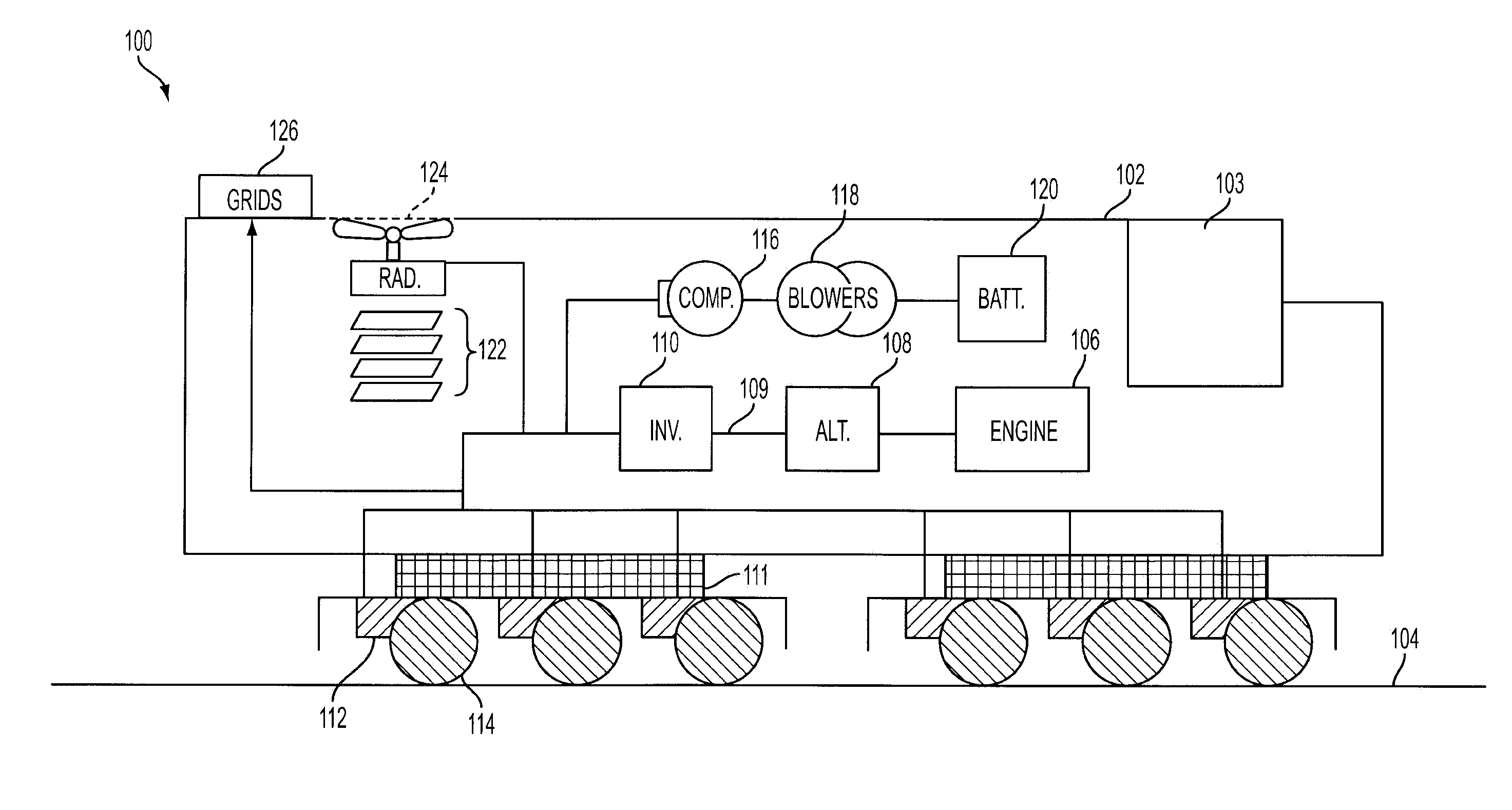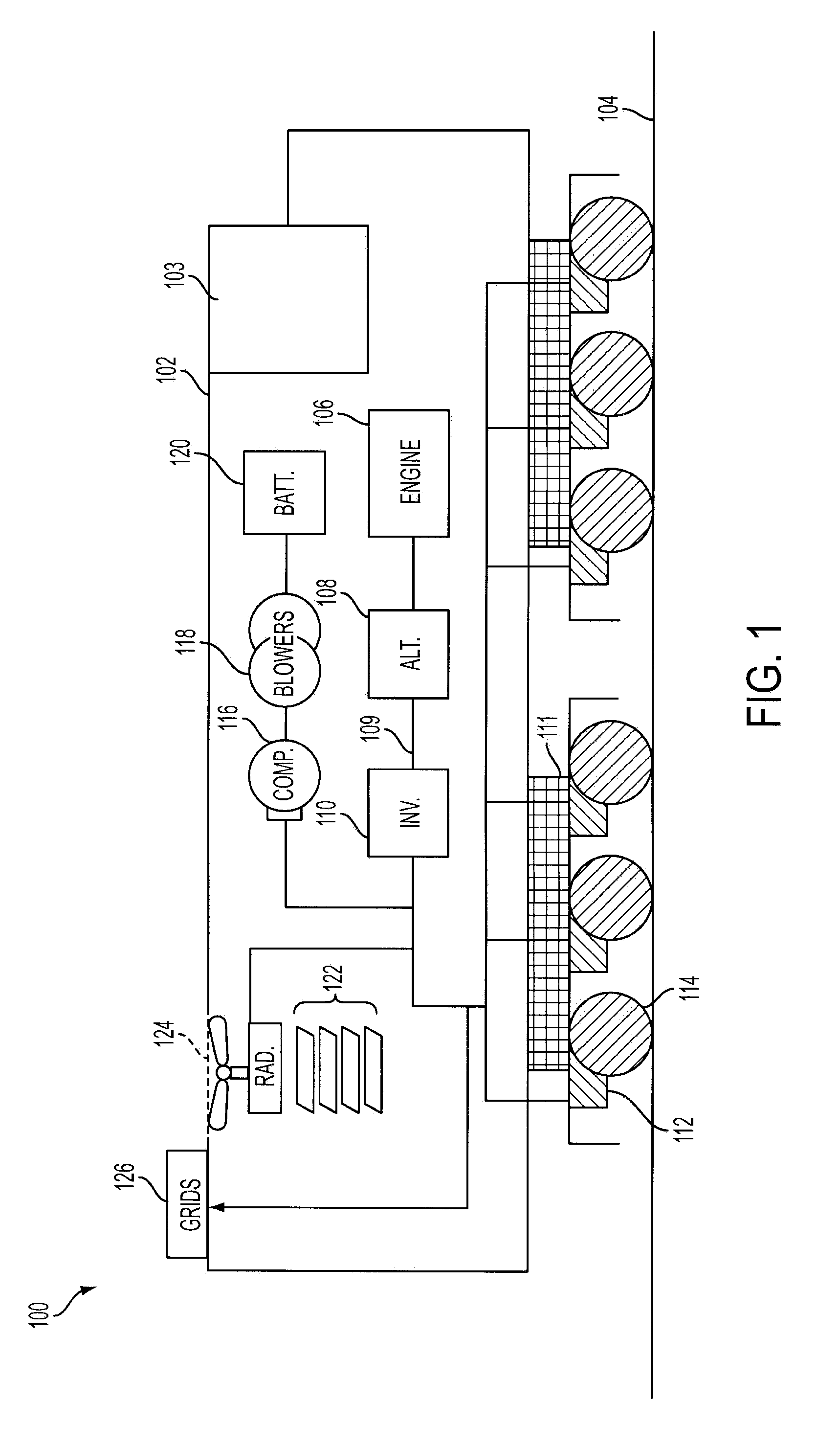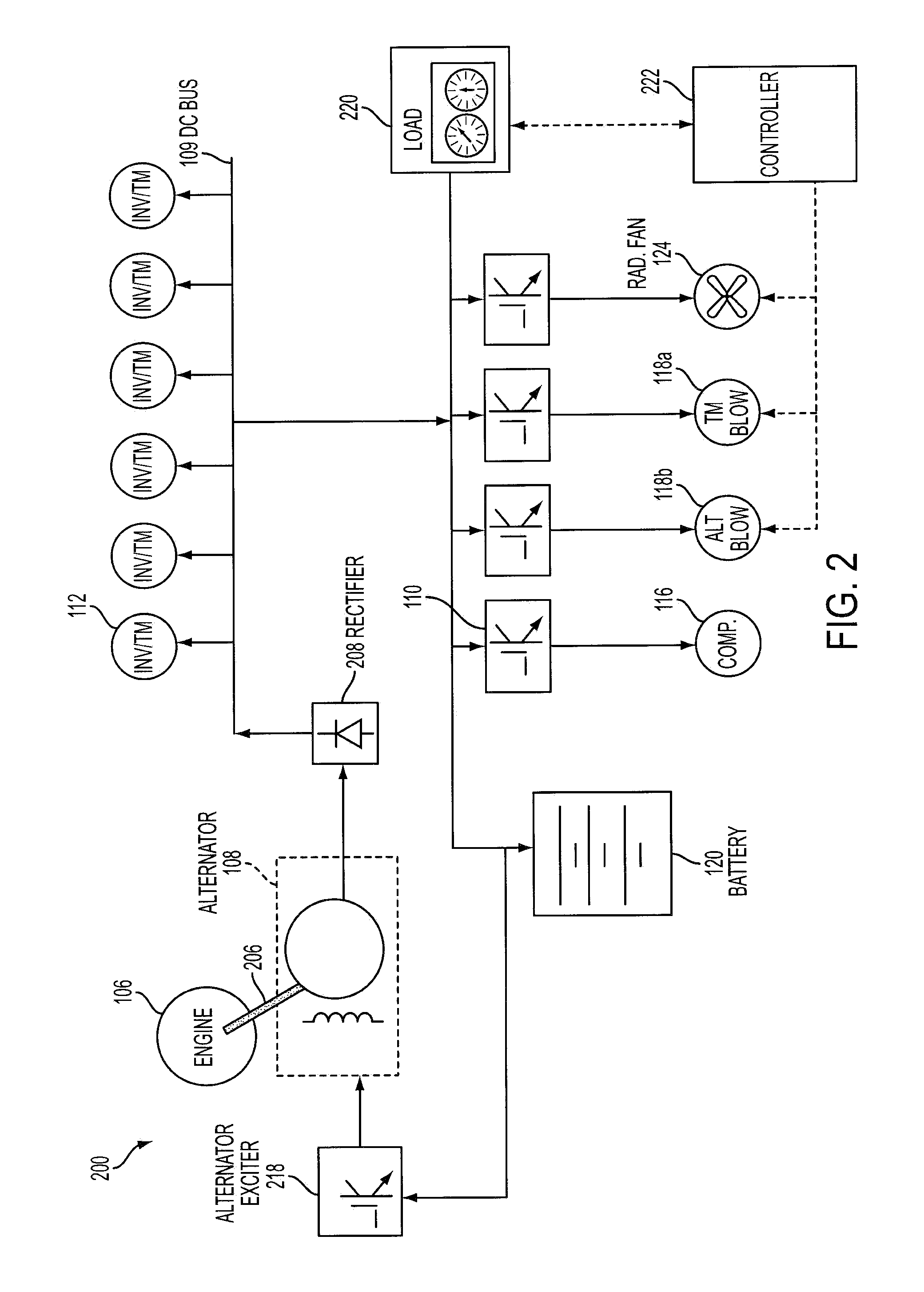Method and system for wind-harnessed battery charging in a locomotive
a technology of wind-harnessed batteries and locomotives, which is applied in the direction of machines/engines, braking components, electric generator control, etc., to achieve the effects of reducing the frequency of battery charging (by the engine), reducing the number and/or duration of engine starts, and slowing down the charging process
- Summary
- Abstract
- Description
- Claims
- Application Information
AI Technical Summary
Benefits of technology
Problems solved by technology
Method used
Image
Examples
Embodiment Construction
[0013]FIG. 1 is a block diagram of an example locomotive vehicle system 100 (hereafter referred to as “locomotive 100”), configured to run on track 104. As depicted herein, in one example, the locomotive is a diesel electric vehicle operating a diesel engine 106 located within a main engine housing 102. However, in alternate embodiments of locomotive 100, alternate engine configurations may be employed, such as a gasoline engine or a bio diesel or natural gas engine, for example. Locomotive operating crew and electronic components involved in locomotive systems control and management may be housed within a locomotive cab 103.
[0014]The diesel engine generates a torque that is transmitted to an alternator 108 along a drive shaft (not shown). The generated torque is used by alternator 108 to generate electricity for subsequent propagation of the vehicle. Locomotive engine 106 may be run at a constant speed, thereby generating a constant horsepower (hp) output. It will be appreciated th...
PUM
 Login to View More
Login to View More Abstract
Description
Claims
Application Information
 Login to View More
Login to View More - R&D
- Intellectual Property
- Life Sciences
- Materials
- Tech Scout
- Unparalleled Data Quality
- Higher Quality Content
- 60% Fewer Hallucinations
Browse by: Latest US Patents, China's latest patents, Technical Efficacy Thesaurus, Application Domain, Technology Topic, Popular Technical Reports.
© 2025 PatSnap. All rights reserved.Legal|Privacy policy|Modern Slavery Act Transparency Statement|Sitemap|About US| Contact US: help@patsnap.com



